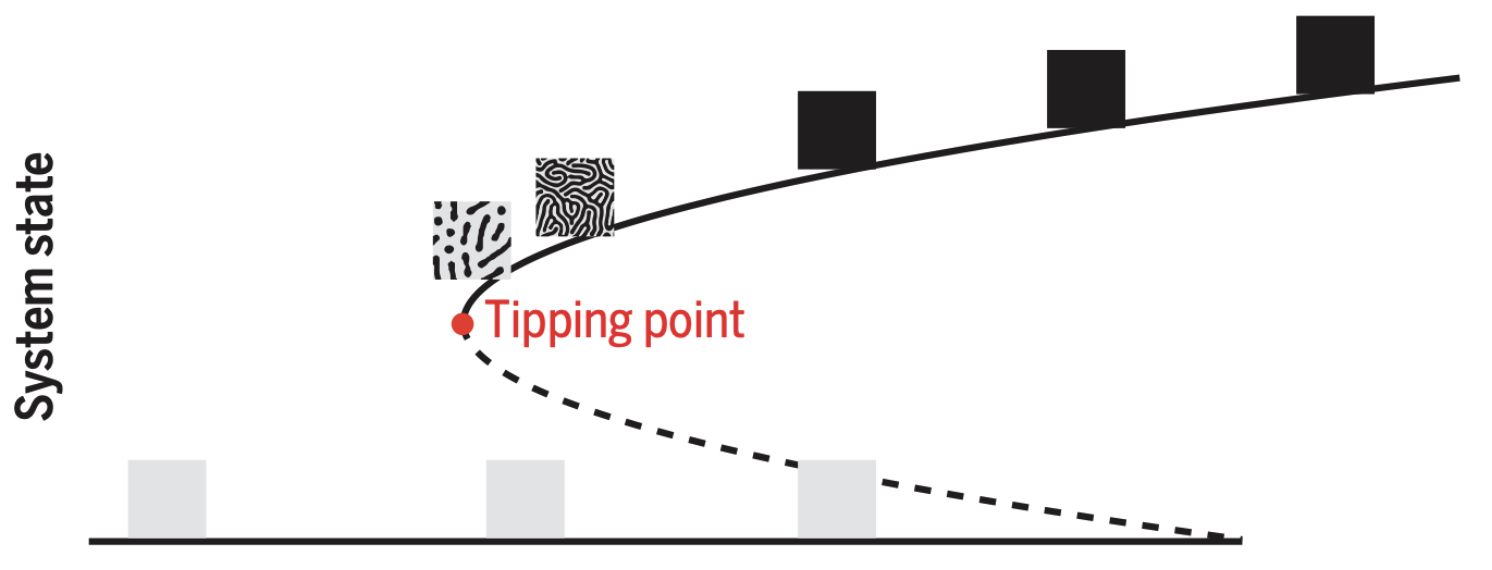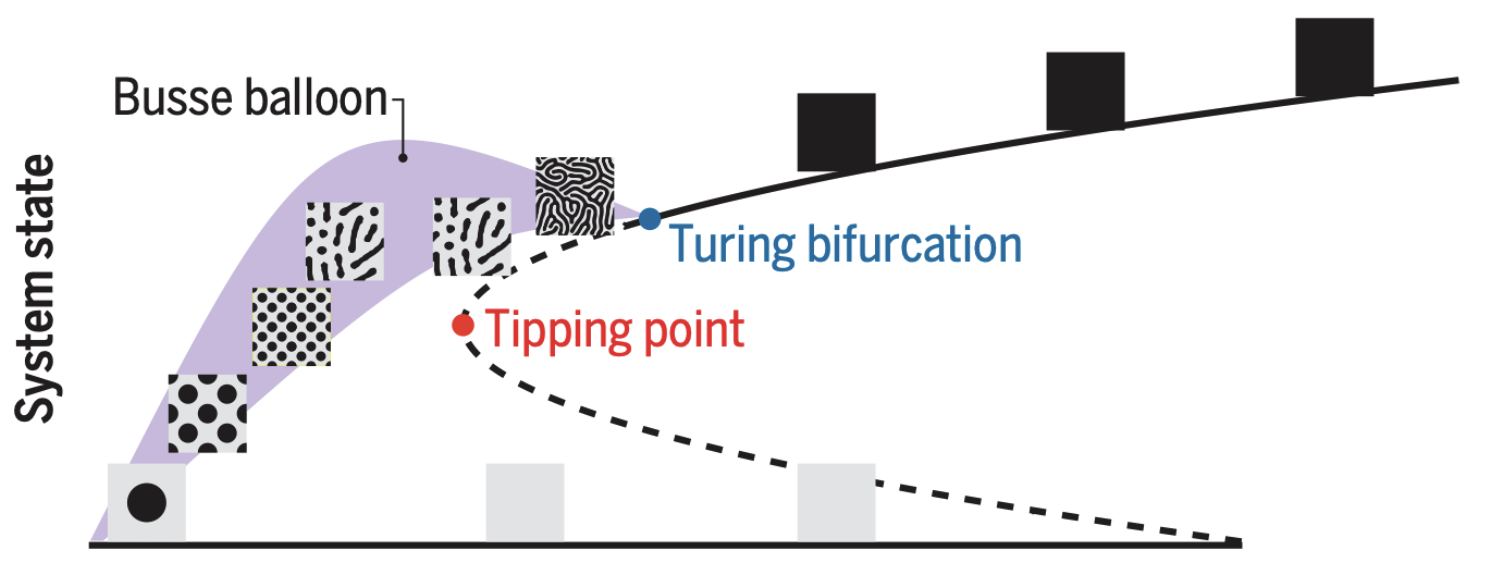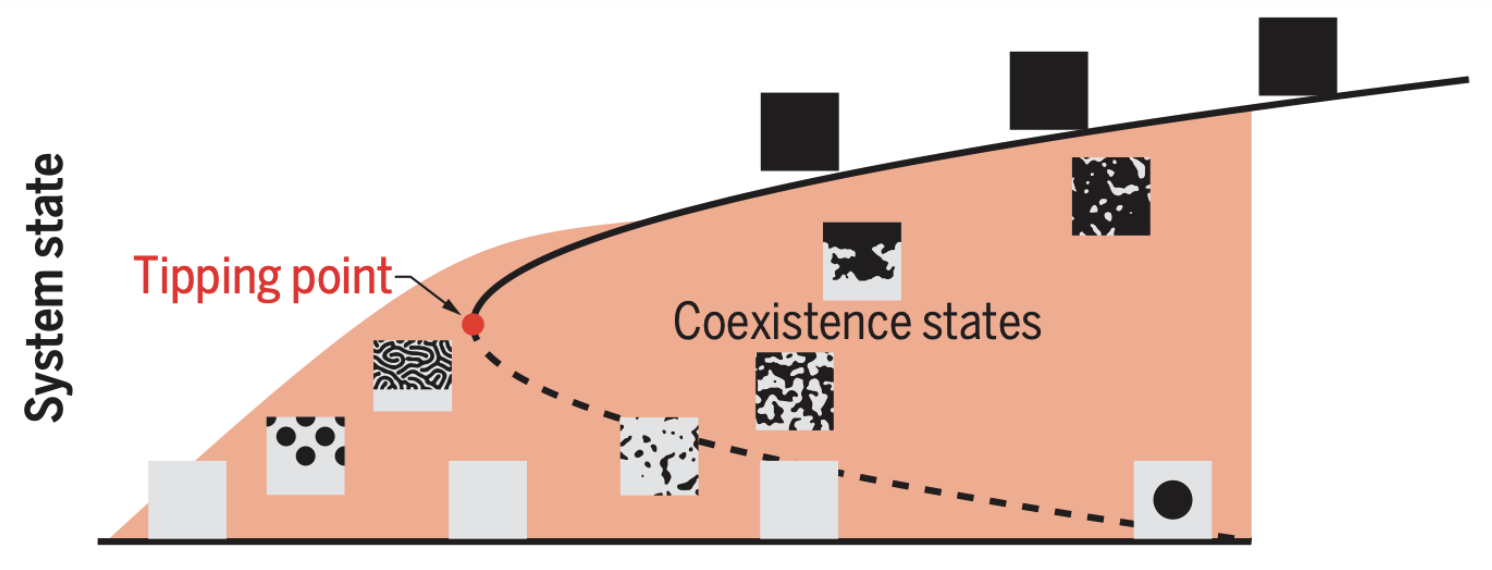Research
There is an urgent need to understand the catastrophic effects that global environmental and climate change can have on the Earth, its system components and ecosystems. One area of critical concern is the imminent high-impact and abrupt tipping of ecosystems: irreversible situations in which, for example, the shift from savanna to desert, but also the stagnation of the warm Gulf Stream, accelerates.
Spatial patterns are often referred to as harbingers of such tipping points, however, recent discoveries indicate that tipping could be evaded and even reversed in ecosystems through spatial pattern formation of vegetation.
Such a patterning appears to ensure that ecosystems can avoid tipping points and thereby creating pathways of resilience. These findings are based on mathematical analyzes of spatial models and on new observations of real ecosystems. Many undiscovered pathways of resilience through spatial pattern formation could exist for tipping-prone ecosystems. This resilience could be even enhanced by the unexplored connection between spatial pattern formation and community assembly.
Learn more about pattern formation and their possible impact on resilience by this short animation video (copyright Anna-mAKe)
The aim of our ERC-Synergy project, Pathways of resilience and evasion of tipping in ecosystems (RESILIENCE), is to fundamentally advance our understanding and predictions of tipping points and critical transitions in ecosystems and reveal how these can be evaded and even reversed through spatial pattern formation. RESILIENCE will develop a new theory for emerging resilience through spatial pattern formation and link this with real tipping-prone biomes undergoing accelerating global change: savanna and tundra. Central to our theoretical approach is the novel mathematical connection between the origin of spatial pattern formation and their emerging resilience. Our empirical approach will include the analysis of existing and new data from in situ observations and drone and satellite-based remote sensing. Our research aims to reveal which conditions and spatial patterns lead to the evasion and even reversal of tipping. Identifying these conditions and patterns will also expose how human interventions can prevent or reverse tipping.




